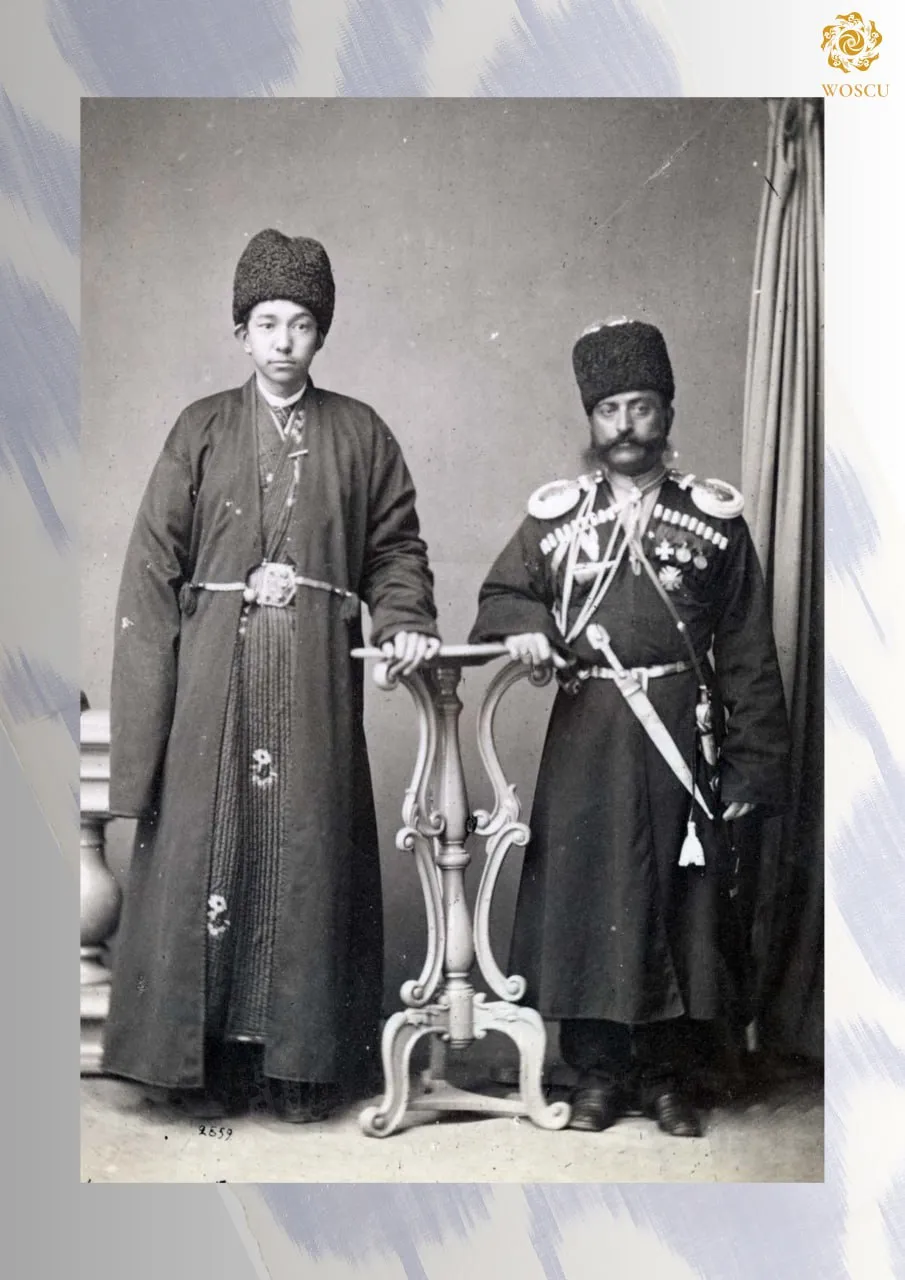The workshops were located directly on the territory of the emir’s residence, and their products were intended primarily for members of his family and court nobility. The manufacture of a robe of particular complexity usually employed 12 people for three months. Each such robe had not only high material value but also artistic value.
However, in everyday life, the emirs, as persons ordained with spiritual dignity, rarely wore expensive clothes, showing an example of the modesty prescribed to Muslims by their religion. Even accepting embassy delegations, they dressed quite simply. One of the participants of the mission to the emir Muzaffar Khan noted that “the costume of the emir struck with its simplicity: he wore the most ordinary robe of bright green colour and a small snow-white turban.”
Another contemporary wrote about him that his costume usually had “a stark contrast with the brightness and brilliance of his statesmen dressed in gold brocade.”
Emirs were supposed to wear gold-embroidered robes, pants, boots and a turban only when they visited the mosque during the two largest Muslim holidays – Eid al-Adha and Eid al-Fitr, and also during the first visit as the Emir of Shahrisabz, revered as a “Khan city.” An exception was also made for official portrait photographs since the appearance of the Emir was to personify his country.
You can learn more about the topic in the book-album “Uzbekistan in historic photographs of the 19th - early 20th centuries in the collections of Russian archives” (Volume XXXVII) in the series “Cultural Legacy of Uzbekistan”.
The general sponsor of the project is the oilfield services company Eriell-Group.


